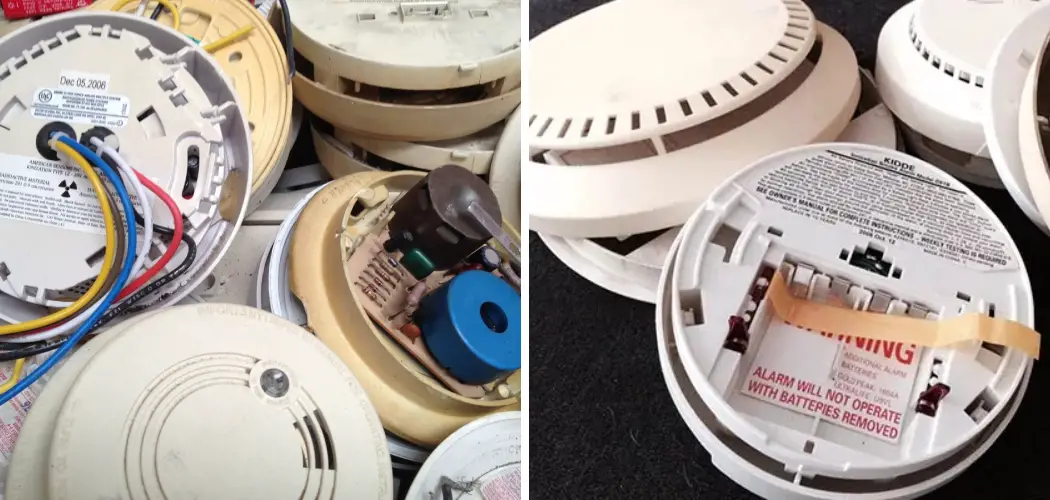Are you wondering what to do with your old smoke detectors? Throwing them in the trash is not an option, as they contain radioactive material that can be harmful to the environment. Fortunately, there are ways to recycle smoke detectors safely and responsibly.
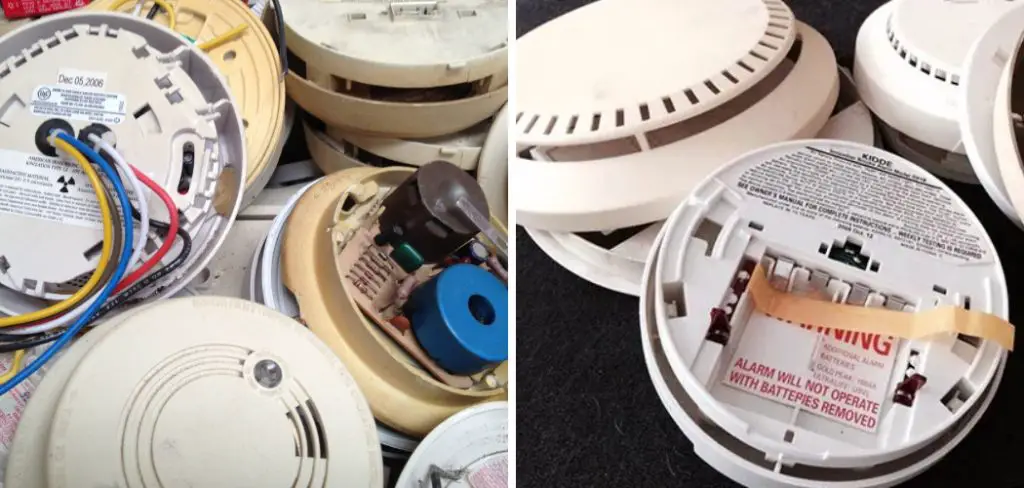
Recycling smoke detectors demands attention and care, given the variety of components they contain, some of which can be hazardous or valuable. Whether it’s an ionization smoke detector, which may include a small amount of radioactive material, or a photoelectric detector, understanding the proper disposal and recycling methods is crucial for environmental protection and safety.
This guide aims to walk you through the steps and considerations on how to recycle smoke detectors, ensuring that hazardous materials are handled correctly and valuable parts are reclaimed, thereby contributing to environmental sustainability.
Why Recycle Smoke Detectors?
Smoke detectors contain a small amount of americium-241, a radioactive material that allows them to detect smoke particles. This is why it’s vital to recycle these devices instead of throwing them in the trash, where they can end up in landfills and harm the environment.
However, even aside from the radioactive material, smoke detectors also contain valuable components that can be recycled. These include metals such as copper, aluminum, and steel, as well as plastic parts that can be repurposed. By recycling smoke detectors, we reduce the need for raw materials and minimize the impact on the environment.
Types of Smoke Detectors
There are two types of smoke detectors commonly used in homes: ionization and photoelectric. Both types contain different materials and require specific recycling methods.
1. Ionization Smoke Detectors: Ionization smoke detectors are more common and use a small amount of americium-241 to detect smoke particles. This type of detector is best for detecting fast, flaming fires. When recycling ionization smoke detectors, it’s essential to handle the radioactive material with care and follow specific guidelines.
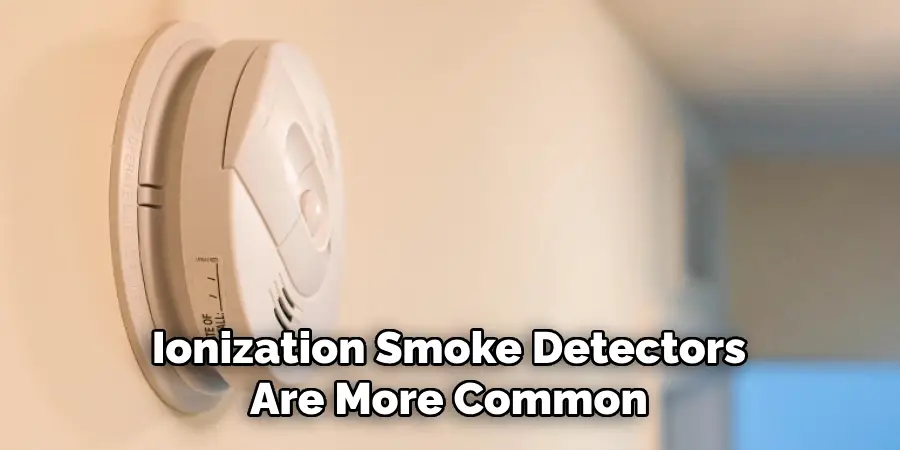
2. Photoelectric Smoke Detectors: Photoelectric smoke detectors use light sensors to detect smoke particles and are better suited for detecting slow, smoldering fires. These types of detectors contain electronic components that can be recycled along with other plastic and metal parts.
These two types of smoke detectors may also contain small amounts of lead, mercury, and other hazardous materials. Therefore, it’s crucial to recycle them in a responsible manner to protect the environment and human health.
What Will You Need?
Before you can recycle your smoke detector, you will need to gather a few supplies. These include:
- A screwdriver
- Small pliers
- Container for radioactive material (if applicable)
- Protective gloves and mask
- Tape or plastic bag (for packaging)
Once you have these supplies, you can proceed with the recycling process.
10 Easy Steps on How to Recycle Smoke Detectors
Step 1. Identify the Type of Smoke Detector:
The first step in recycling your smoke detector is to identify whether it is an ionization type or a photoelectric type. This information can typically be found on the back of the device or in the user manual. Knowing the type of detector is crucial as it determines how you will proceed with the recycling process.
Step 2. Remove the Smoke Detector from Its Mounted Position:
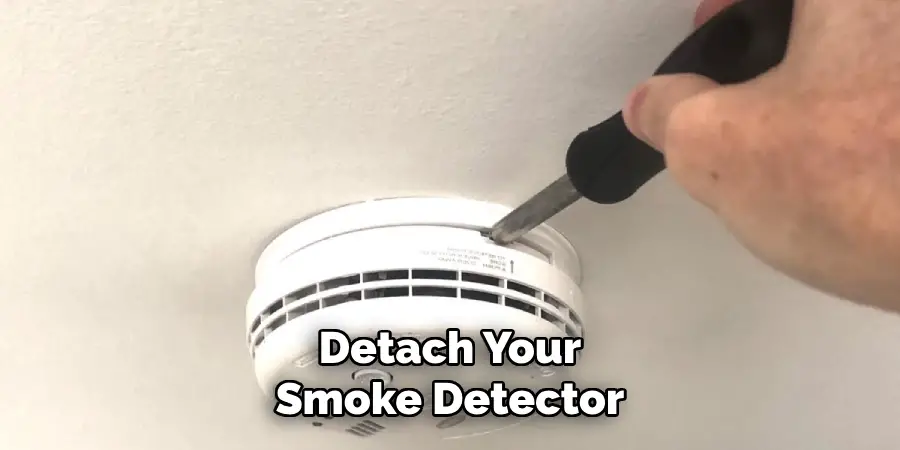
Carefully detach your smoke detector from its mounted position on the ceiling or wall. This usually involves twisting the device counter-clockwise or unclipping it from a base plate. Once removed, place the smoke detector on a stable, flat surface to prepare for disassembly. Be sure to wear protective gloves and a mask to avoid direct contact with any potentially hazardous materials inside the detector.
Step 3. Disassemble the Smoke Detector:
Using your screwdriver, carefully open the smoke detector’s casing. This step may vary depending on the make and model of your smoke detector, so refer to the user manual if necessary. Inside, you’ll find the circuit board, the sensor chamber (which may contain americium-241 in ionization detectors), and batteries.
Use pliers to gently remove these components, starting with the batteries. Remember to care for all parts, especially if you’re dealing with an ionization smoke detector that contains radioactive material. Place the radioactive materials into a dedicated container for proper disposal.
Step 4. Separate Recyclable Materials:
Once you have disassembled the smoke detector, sort the components into recyclable materials. Metals such as copper, aluminum, and steel can be recycled at most recycling centers. If your local recycling program accepts plastic parts should be placed in a separate recycling bin.
Be sure to check the recycling guidelines of your municipality or recycling center to ensure that you are separating the materials correctly. It’s important to keep the potentially hazardous materials, like the sensor chamber containing americium-241, separate from the recyclable components to prevent contamination.
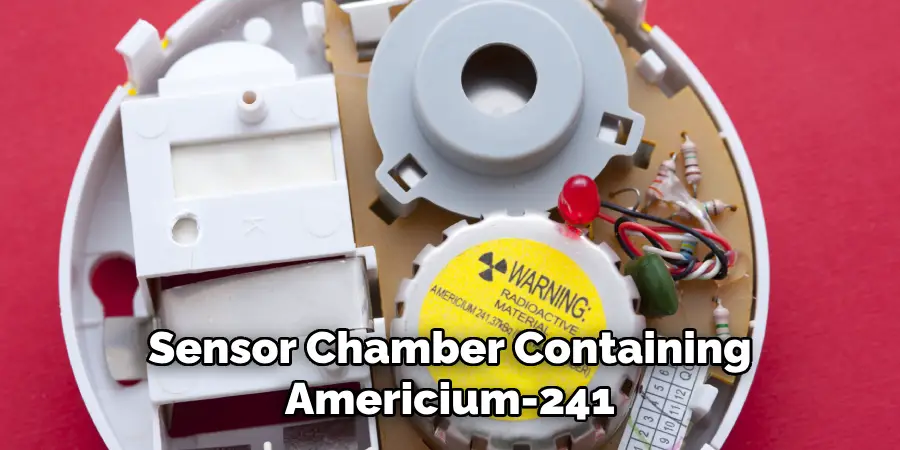
Step 5. Package the Hazardous Material:
For the ionization smoke detectors that contain americium-241, it’s crucial to package the sensor chamber, or any part containing the radioactive material, safely for disposal. Use a sturdy, sealable container to prevent any leakage or exposure. Wrap the material in a plastic bag and seal it with tape before placing it in the container.
Label the container clearly as containing radioactive material to ensure that it is handled appropriately at the recycling center or hazardous waste facility. Always follow specific guidelines provided by your local waste management authorities for the disposal of radioactive materials.
Step 6. Find a Recycling Center or Program:
Locate a recycling center or program that accepts smoke detectors. Not all recycling centers are equipped to handle the radioactive material in ionization smoke detectors, so it’s essential to find one that does. Some manufacturers of smoke detectors also offer take-back programs for recycling their products.
Check the manufacturer’s website or contact their customer service for information on recycling programs. Additionally, your local municipality or environmental agency may have recommendations for recycling centers or special programs for disposing of hazardous waste like smoke detectors.
Step 7. Prepare for Shipping or Drop-off:
Before taking your disassembled smoke detector components to the recycling center, ensure that they are properly packaged. This includes double-checking that all hazardous materials are securely sealed and labeled. For recyclable parts, like metals and plastics, consider separating them into different bags or containers to facilitate the recycling process.
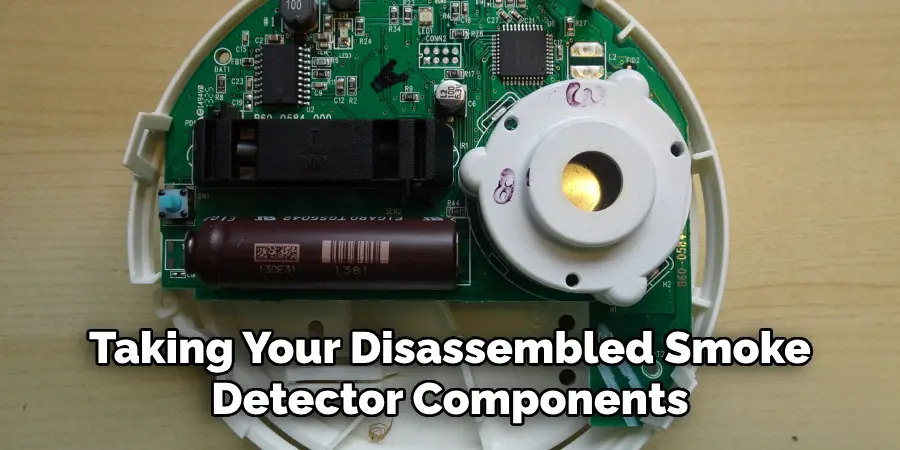
If you’re shipping the components, use a strong, padded envelope or a box to prevent any damage during transit. Be sure to include any necessary forms or labels as required by the recycling program or center.
Step 8. Transport the Smoke Detector Components:
Carefully transport the packaged smoke detector components to the designated recycling center or drop-off location. If you are using a manufacturer’s take-back program, follow their instructions for mailing the components. For local drop-offs, ensure that the center is open and accepts the materials you are bringing. Handle the components with care during transport to avoid any accidental release of hazardous materials.
Step 9. Confirm the Disposal and Recycling Process:
Upon reaching the recycling center or drop-off location, ensure that your smoke detector components are received by a qualified individual who is aware of the contents, especially if they include hazardous materials like americium-241.
It’s important to discuss the recycling and disposal process briefly with them to confirm that the materials will be handled and processed in an environmentally responsible manner. Many centers will have specific protocols for dealing with hazardous waste and confirming these can provide peace of mind that your smoke detector is recycled properly.
Step 10. Educate Yourself and Others:
After successfully recycling your smoke detector, take the opportunity to educate yourself further on recycling and proper waste disposal. Many people are unaware of how to safely dispose of potentially hazardous household items.
By sharing your experience and knowledge with friends and family and through social media, you can help raise awareness about the correct disposal methods for smoke detectors and other similar devices. Promoting responsible recycling habits contributes to environmental conservation and public health, ensuring that hazardous materials are not improperly disposed of in landfills or incinerators where they could cause harm.
By following these steps, you can safely disassemble and recycle your old smoke detectors, contributing to a cleaner and healthier environment. Remember to always handle hazardous materials with care and follow proper disposal guidelines to ensure your own safety and that of those around you.
5 Additional Tips and Tricks
1. Identify the Detector Type: Before recycling, determine whether your smoke detector is ionization or photoelectric. Ionization detectors contain a small amount of Americium 241, a radioactive material, and require special handling. Photoelectric detectors can be recycled with less caution, but you should still check with your local facilities.
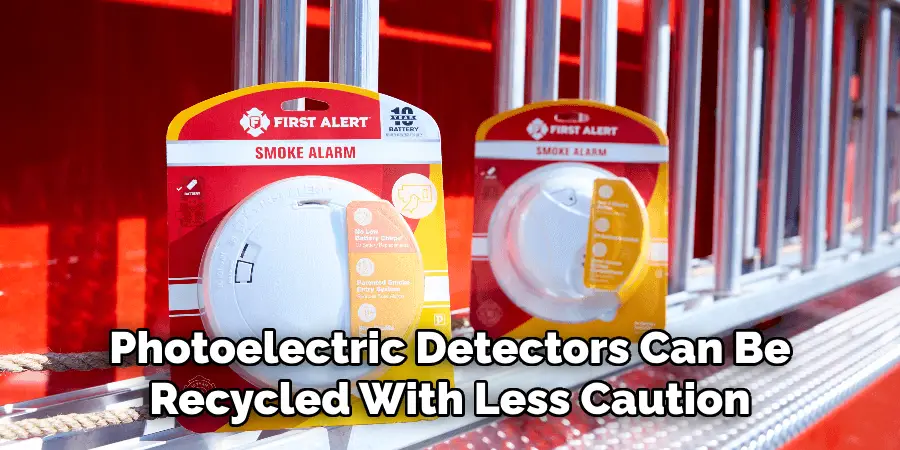
2. Contact Local Hazardous Waste Facilities: Many communities have hazardous waste facilities capable of safely processing and recycling smoke detectors. It’s essential to call ahead and confirm they accept your type of detector.
3. Manufacturer Take-Back Programs: Some smoke detector manufacturers offer take-back programs for old units. Visit the manufacturer’s website or contact them directly to see if they provide this service and follow their instructions for sending back the product.
4. Remove Batteries: Always remove and separately recycle the batteries. Smoke detector batteries, whether standard or lithium-ion type, should not be thrown in the trash and can often be recycled at local electronic stores or through community hazardous waste programs.
5. Avoid Dismantling: Do not attempt to dismantle the smoke detector to recycle components yourself. This can release hazardous materials and is usually counterproductive. Always seek professional recycling options to handle the unit as a whole.
With these additional tips and tricks, you can ensure proper handling and recycling of your old smoke detectors.
5 Things You Should Avoid
- Do Not Throw in Regular Trash: Smoke detectors contain materials that can be harmful to the environment and should never be disposed of in your household waste.
- Do Not Ignore Manufacturer Guidelines: Failing to follow the manufacturer’s guidelines for recycling or disposal can result in improper handling of potentially hazardous materials.
- Do Not Overlook Local Regulations: Many regions have specific laws and regulations about the disposal of electronic waste, including smoke detectors. Ignoring these can lead to legal repercussions or environmental harm.
- Do Not Send to Unverified Recyclers: Ensure that the recycling facility or program is equipped to handle smoke detectors safely. Sending them to unverified recyclers might lead to improper disposal.
- Do Not Attempt to Recycle Used Smoke Detectors for DIY Projects: While repurposing or upcycling various items can be beneficial, used smoke detectors contain radioactive materials and other hazardous substances that make them unsuitable for DIY projects.
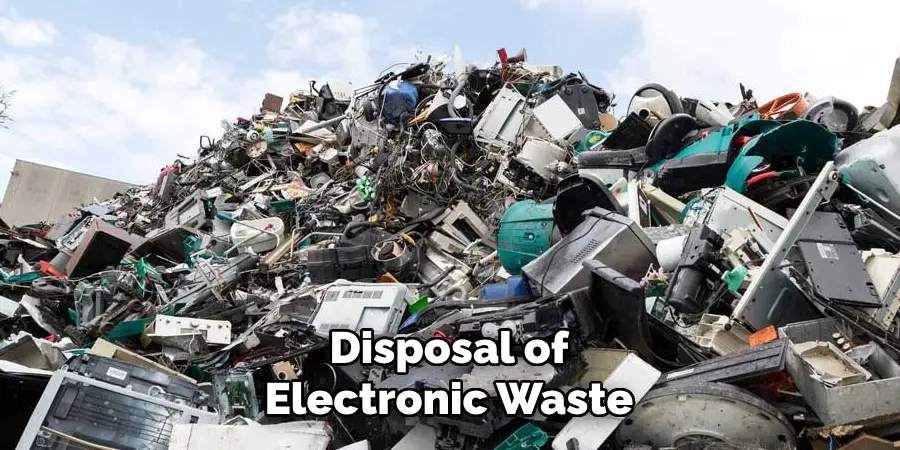
By avoiding these actions, you can ensure proper and safe handling of your smoke detectors.
Some Frequently Asked Questions
1. How Can You Cover All Your Bases for Smoke Detector Recycling?
To cover all your bases when it comes to smoke detector recycling, follow these steps:
- Research Local Regulations: Find out what laws and regulations govern electronic waste disposal in your area. This will help you understand the proper procedures for recycling your smoke detectors.
- Contact the Manufacturer: As mentioned earlier, some manufacturers offer take-back programs for their products. Contact them to see if this is an option for your old smoke detector.
- Check with Local Hazardous Waste Facilities: Call your local hazardous waste facilities to confirm if they accept smoke detectors and follow any specific guidelines they may have.
- Remove Batteries: Always remove the batteries before recycling the smoke detector. As mentioned previously, batteries should be recycled separately to avoid potential hazards.
- Find Certified Recyclers: Look for certified recyclers who have the necessary permits and expertise in handling electronic waste, including smoke detectors. This will ensure proper disposal and reduce environmental impact.
By following these steps, you can cover all your bases and safely recycle your old smoke detectors.
2. What Happens if a Smoke Detector Gets Wet?
If your smoke detector gets wet, it may stop working due to damage or corrosion of its components. In this case, it’s best to replace the unit entirely and recycle the old one, following the steps mentioned above.
It’s also crucial to regularly test your smoke detectors and replace them every 10 years, as recommended by manufacturers. This ensures they are functioning properly and effectively, alerting you to potential fires.
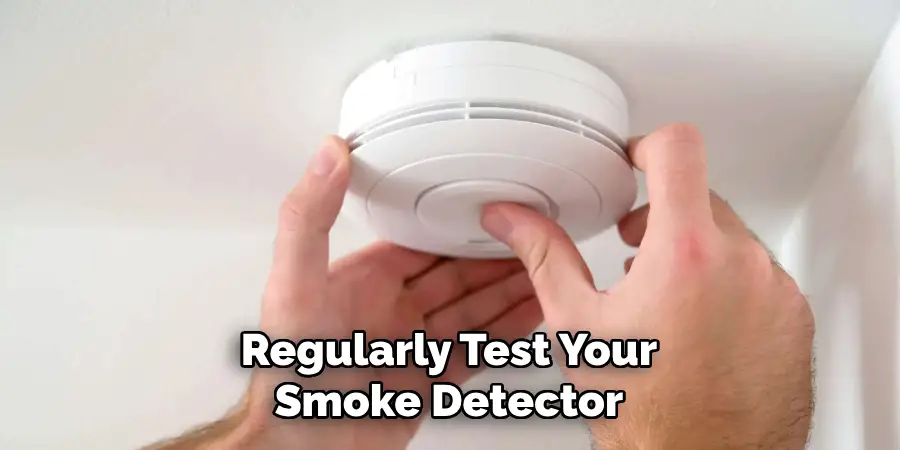
Overall, proper recycling and disposal of smoke detectors is crucial for the environment and our health.
3. How Can You Clean and Maintain Smoke Detectors?
To ensure your smoke detectors are in good working condition, follow these maintenance tips:
- Clean Regularly: Use a soft brush or vacuum to remove any dust or debris from the outside of the detector. This will prevent build-up that can interfere with its functionality.
- Test Monthly: Test your smoke detectors at least once a month by pressing the test button. If it doesn’t produce a sound, replace the batteries or unit.
- Replace Batteries Yearly: Even if your detector is still functioning, replacing the batteries every year is recommended to ensure proper performance in an emergency.
- Replace Every 10 Years: As mentioned earlier, smoke detectors should be replaced every 10 years to ensure they are up-to-date and functioning correctly.
By following these maintenance tips, you can help extend the lifespan of your smoke detectors and keep them in good working condition.
4. Do Smoke Detectors Turn Yellow?
Yes, over time, smoke detectors may turn yellow due to exposure to sunlight or other environmental factors. This discoloration does not necessarily affect their functionality but may make them less visually appealing. If your smoke detector is more than 10 years old and turning yellow, it’s best to replace it with a newer model for optimal performance in case of an emergency.
Moreover, the yellowing of smoke detectors may also indicate that they contain trace amounts of radioactive material, which can be a potential health hazard. It’s best to recycle and dispose of old smoke detectors properly.
5. Why is Your Smoke Detector Beeping?
A beeping smoke detector may indicate a low battery or a malfunction. If the beeping is a warning for low battery, replace the batteries immediately. If it continues to beep even after replacing the batteries, it may be time to replace the entire unit. Additionally, a smoke detector may also beep if there is an issue with its sensors or if it needs cleaning.
Another reason for beeping could be an electrical issue or power outage. It’s crucial to regularly test and maintain your smoke detectors to avoid potential beeping or malfunction when you need them the most.
Overall, proper disposal, maintenance, and replacement of smoke detectors are essential for our safety and the environment. By following these guidelines, we can ensure that our smoke detectors are functioning correctly and disposed of in an environmentally responsible manner.
Conclusion
How to recycle smoke detectors is a critical step in ensuring environmental safety and personal health. By adhering to local regulations, participating in manufacturers’ take-back programs, and utilizing certified recycling facilities, individuals can contribute to a sustainable future. It is essential to recognize the unique components of smoke detectors, such as radioactive materials, and handle them with the appropriate care to prevent any harmful effects.
Regular maintenance and timely replacement of smoke detectors not only extend their operational life but also support environmental conservation efforts.
In conclusion, by following the outlined steps and maintaining awareness of the proper disposal methods, everyone can play a part in responsibly recycling smoke detectors, thereby safeguarding both our planet and our well-being.

